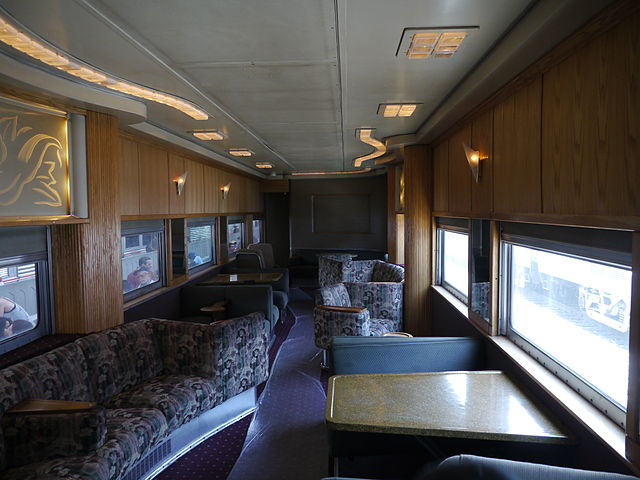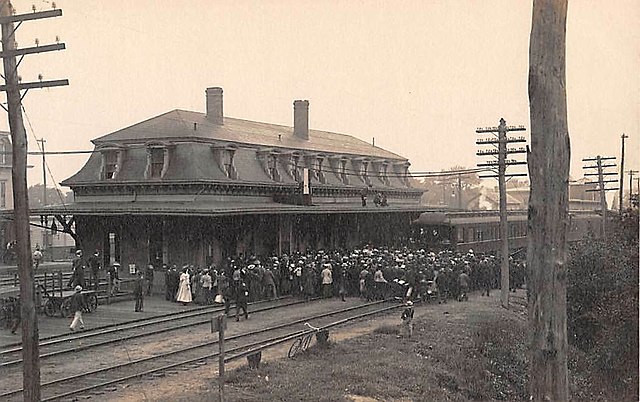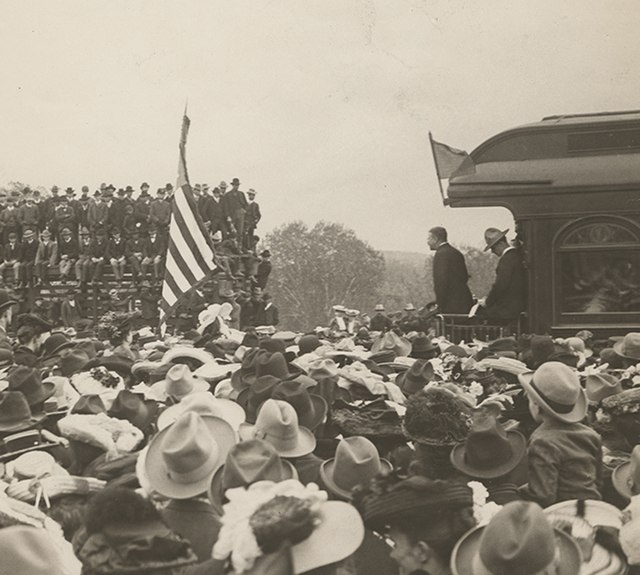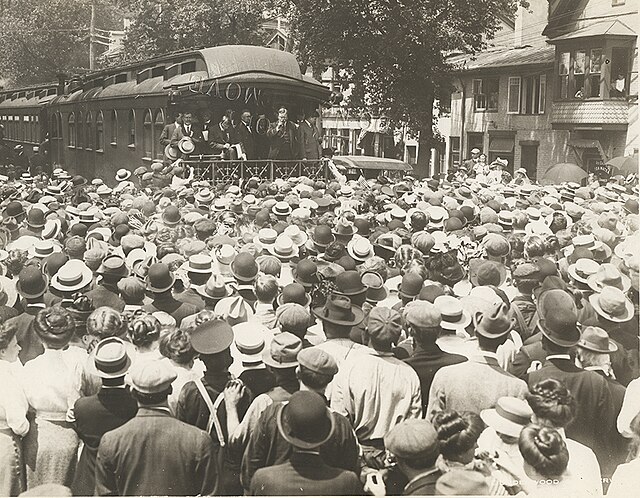A private railroad car, private railway coach, private car, or private varnish is a railroad passenger car either originally built or later converted for service as a business car for private individuals. A private car could be added to the make-up of a train or pulled by a private locomotive, providing privacy for its passengers. They were used by railroad officials and dignitaries as business cars, and wealthy people for travel and entertainment, especially in the United States. They were sometimes used by politicians in "whistle stop campaigns". Pay cars with less opulent sleeping and dining facilities were used by a paymaster and assistants to transport and disburse cash wages to railway employees in remote locations without banking facilities.
Two private railroad cars at Denver Union Station in December 2015
Interior of a private coach
Private car Caritas at Boston's South Station in 2001
A whistle stop or whistle-stop tour is a style of political campaigning where the politician makes a series of brief appearances or speeches at a number of small towns over a short period of time. Originally, whistle-stop appearances were made from the open platform of an observation car or a private railroad car.
Early 20th-century photograph of a whistle-stop speech at the train station in Putnam, Connecticut
Republican vice presidential nominee Theodore Roosevelt on a whistle-stop during the 1900 presidential election
Former president Theodore Roosevelt delivers a whistle-stop speech during his third party campaign as the nominee of the "Bull Moose" Progressive Party in the 1912 presidential election
1916 Republican presidential nominee Charles Evans Hughes speaking during at the train station in Winona, Minnesota while completing a whistle-stop tour on the Milwaukee Road's Olympian







